





•
• Fully Furnished
• Resort-Style Rooftop Pool
• Private Workspaces
• Coffee and Breakfast Bar
• State-Of-The-Art Fitness Center










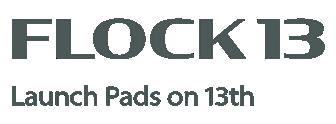


Cossette PHOTO
McPherson
DESIGN
Blodgett
Ehrhart
COPY CHIEF Olivia Ellerbruch
SENIOR
PODCAST
SOCIALS
VISUALS
Davis-Powell
Santiago
Fetherston
PUBLISHER & PRESIDENT
Eric Henry X317 ehenry@dailyemerald.com
VP OPERATIONS Kathy Carbone X302 kcarbone@dailyemerald.com
DIRECTOR OF SALES &
DIGITAL MARKETING
Shelly Rondestvedt X303 srondestvedt@dailyemerald.com
CREATIVE & TECHNICAL DIRECTOR
Anna Smith X327 creative@dailyemerald.com
ACCOUNT EXECUTIVES
Lola Tagwerker
Cori Caplinger
Cooper Gast Taylor Baumgardner
ON THE COVER
Khushi Singh, a member of the South Asian Cultural Alliance, poses for a portrait inside of the UO Mills International Center on April 30, 2024. (Alex Hernandez/Emerald)
Local coffee shop Soko Coffee closed its doors for good on April 28. The coffee shop operated on Oakway and Cal Young Road began as a cart planned to operate on weekends and at private events and opened in the summer of 2020.
UO alumnus and co-owner of Soko Coffee Kevin Yamaka explained how the rising costs of labor and goods impacted the shop’s ability to stay afloat.
“For us, what it really boiled down to were just operating costs outpacing sales,” Yamaka said.
Soko Coffee, which operated in the Cal Young neighborhood, began as a simple cart before upgrading to brick and mortar.
Similar to many small businesses that have closed down recently, the biggest cost of running the business was labor.
“We had to offer a competitive wage for people and felt like we weren’t able to reduce our labor costs that much,” Yamaka said.
Soko operated as a specialty coffee shop, meaning that Yamaka and his wife Leslie, also a UO alumna, bought their products wholesale.
“We weren’t roasting our coffee, we were getting them from vendors, and each one of those things cut into our margins,” Yamaka said.
UO senior Victoria Greene has worked at Moke’s Coffee and Kitchen for just over two years. Greene says that while Moke’s has not been hit hard by the rising costs of goods and
wages, there have been small adjustments that the cafe has made.
“We only recently did a menu change,” Greene said. “With that, we had to increase the prices of things. Coffee increased by 50 cents.”
Greene says that regulars will memorize the prices of their go-to menu items. To keep customers loyal, Moke’s put up signs giving a heads-up that certain items would increase in price.
“When we had to implement those price changes, a lot of people were really understanding about it,” Greene said. “I was shocked that [owner Mike Coplin] was able to keep our prices low for so long.”
From March 2023 to March 2024, compensation costs for workers increased by 4.2% on average nationwide.
Yamaka explained how difficult it was that the shop did not have features like a drive-thru window that could have helped bring in more volume.
For a specialty shop like Soko, relying on pure volume of sales, it can be difficult for owners to charge enough to keep their business running.
“If we set the price too high, we would have people coming in once or twice instead of three to five times a week,” Yamaka said. “The amount that we would have to charge to offset our operating costs would have been way too high.”
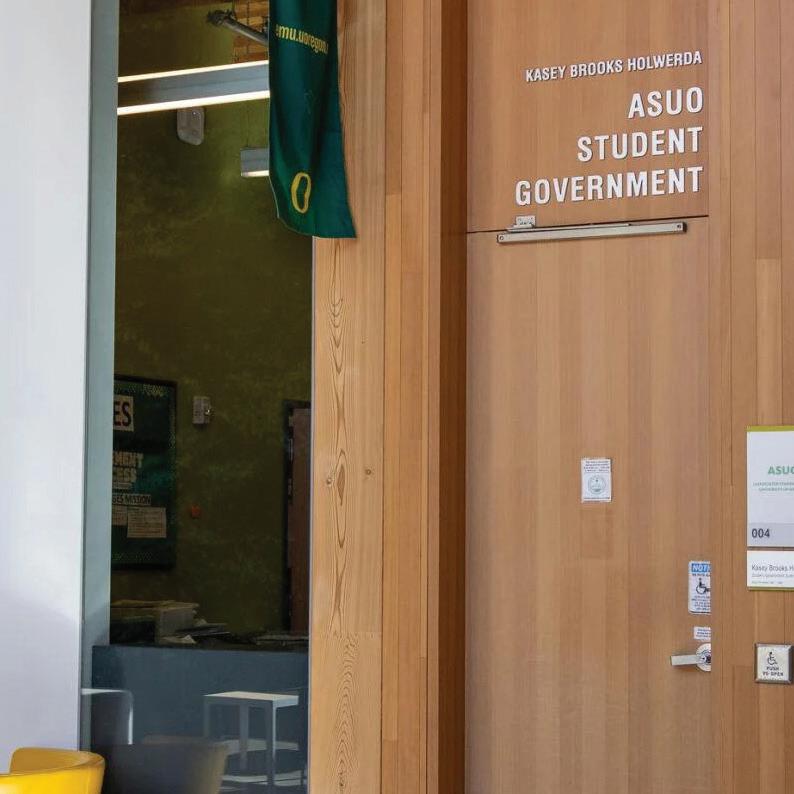
The ASUO Senate passed resolutions to “protect the Powwow” and “ end druggings and sexual assault” on May 15.

Primary elections in Oregon take place on Tuesday, May 21. Voters must postmark their ballots by Election Day or place them in a drop box by 8 p.m.
We want to hear from you:
Email editor@ dailyemerald.com to submit a tip or a letter to the editor. The ideal length for a letter is 200-500 words, but we publish letters of various lengths online.

Some participants in UO’s pro-Palestine encampment reflect on the struggles, changes and life adjustments following their choice to join the encampment
Following the first four days of the pro-Palestine encampment on the Memorial Quad, which began on April 29, some participants at the camp reflect on how the encampment has changed their lives and the adjustments they’ve had to make since joining.
The Daily Emerald sat down with two participants at the encampment, UO students Jack and Amelia, who only provided first names out of fear of retaliation from the university.
“I’m here because [UO’s investments are] incredibly pressing and important and something that [UO students] can influence,” Jack said. “It’s not some conflict on the other side of the world, because our university has our endowment invested in the weapons companies that are killing people, and that’s not okay.”
Jack said his day begins by waking up at the encampment and doing homework. He said that he attends at least one of his classes throughout the day, but spends the rest of his time at the
encampment.
He said that choosing whether to attend class or not depends on where he would learn the most.
Demonstrators in the encampment raise new, large banners with messages in support of the Boycott, Divestment, Sanctions movement.
(Alex Hernandez/Emerald)
encampment starts off by completing academic assignments. Amelia said they rely on financial aid and scholarships to attend UO and is worried about their grades being hurt because they joinedfrom them joining the encampment.
Once the encampment starts to “liven up” and “quiet hours” are lifted, Amelia has breakfast and tries to attend “as many classes” as possible and attends the activities scheduled for the day, including discussions.
Jack said that “there’s no way of knowing” how situations will play out in the encampment in terms of safety and any police presence that might occur.
Amelia said that the encampment provides areas for students to “collaborate” and complete their assignments. They said that their favorite part of the encampment is the ability to have “open dialogue” with UO faculty and staff.
“I’ve got into open dialogues with my professors who aren’t coming out and talk to them about why I’m out here, and the value that I think it would bring if they came out here and joined us,” Amelia said. “I think just getting to engage with professors in a really different way than usual has been really interesting, and it’s interesting for us as students to have a ‘call to action’ for them[professors] rather than vice versa.”
“I PLAN ON BEING HERE AS LONG AS IT’S UP,” JACK SAID. ‘THERE’S NO OTHER PLACE I WOULD RATHER BE BECAUSE WE ARE WORTH STANDING UP FOR WHAT’S RIGHT AND TRYING TO BUILD A BETTER UNIVERSITY.”
‘JACK,’
“The way I think about it is if I skip a class, it’s because I know that I will learn more by being at the encampment,” Jack said. “If there is a class that I feel like I really need to go to, to get something done or to learn about something important, I’ll go to the class.”
In the evening, Jack said he goes back to his dorm to shower, then arrives back at the encampment to socialize and, finally, sleep. He said his favorite part about the encampment is “building a community” by assisting and engaging with other participants.
Similarly, Amelia said that their day at the
Both Amelia and Jack agreed that they are prioritizing personal hygiene and health by continuing to shower and “freshen up” when needed, despite the “inconvenience” camping on the Memorial Quad might bring.
“Yes, we’re camping, but we are also on campus, [so] there are amenities,” Jack said. ”It is definitely an inconvenience when you have to walk to the other side of campus to use the bathroom certain times a day, but I’ve been brushing my teeth regularly. I’ve been taking showers every night. I’m still keeping up with my hygiene.”
Both Jack and Amelia said that as long as the encampment is ongoing, they would continue to participate at camp.
“I plan on being here as long as it’s up,” Jack said. ‘There’s no other place I would rather be because we are worth standing up for what’s right and trying to build a better university.”
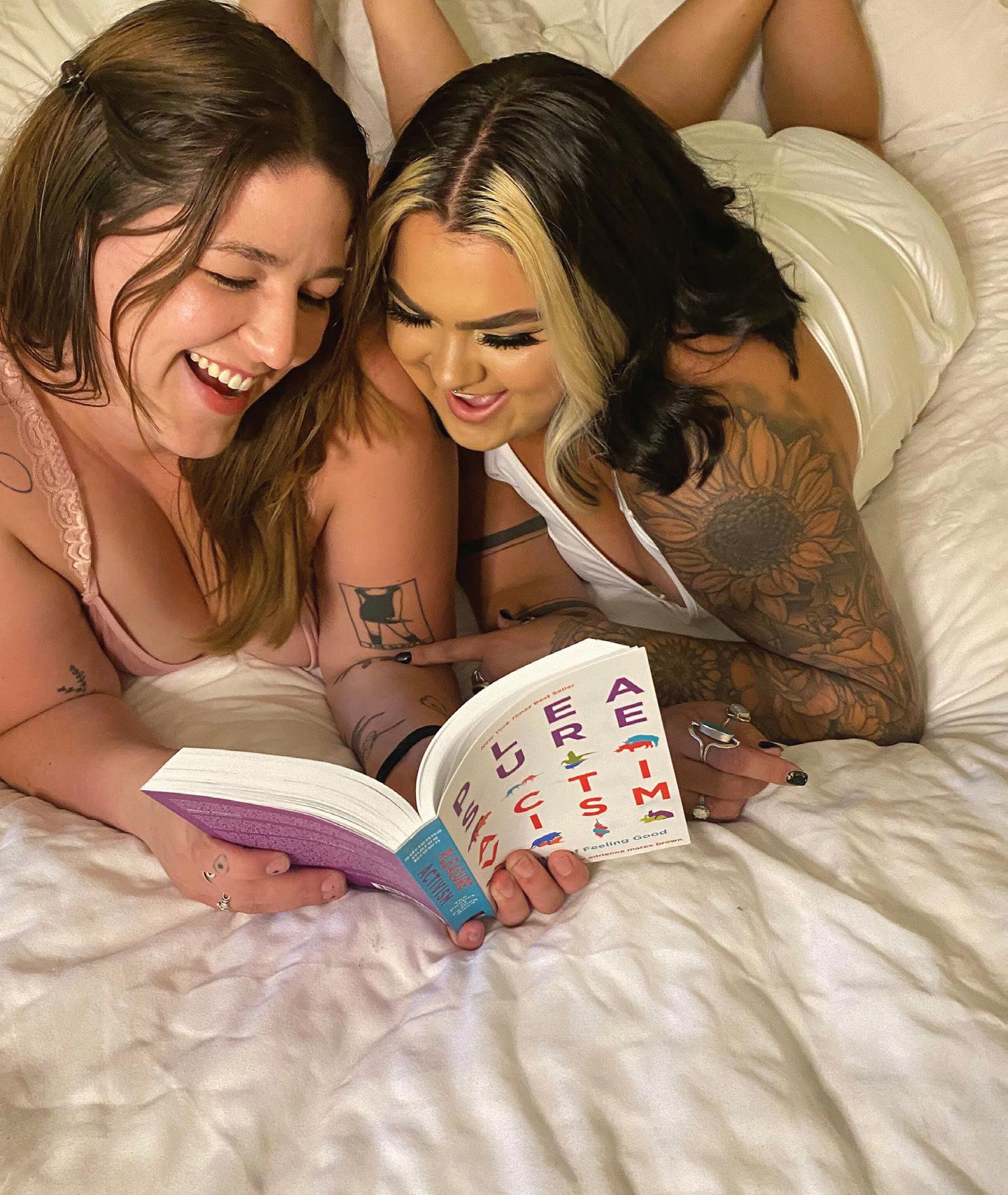




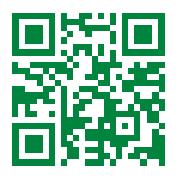

Amidst a nationwide debate on the role DEI should have in higher education, some UO officials said it had been “race-neutral” in its admissions well before 2023
In an era of increased social visibility for diversity, equity and inclusion initiatives, some universities have remained steadfast to these programs, while others have favored keeping race and individuals’ identities out of college applications.
In an email conversation with the Daily Emerald, some University of Oregon officials said that UO had already been enforcing “race-neutral” admissions long before the 2023 Supreme Court reversal of affirmative action.
Other officials have told the Emerald that UO just began its race-neutral admissions policy after
the 2023 ruling.
While some states — such as Florida, Texas, North Carolina and Georgia — have begun to pursue DEI bans and legislation that aim to remove funding from “divisive concepts,” UO Vice President of Equity and Inclusion Yvette M. AlexAssensoh told the Emerald that she feels fortunate to work and live in a state that is currently supportive of DEI initiatives.
“We have fortunately, in Oregon, not had to defend ourselves against those kinds of attacks,” Alex-Assensoh said. “Are we concerned about the broader issues of the ways in which these kinds of
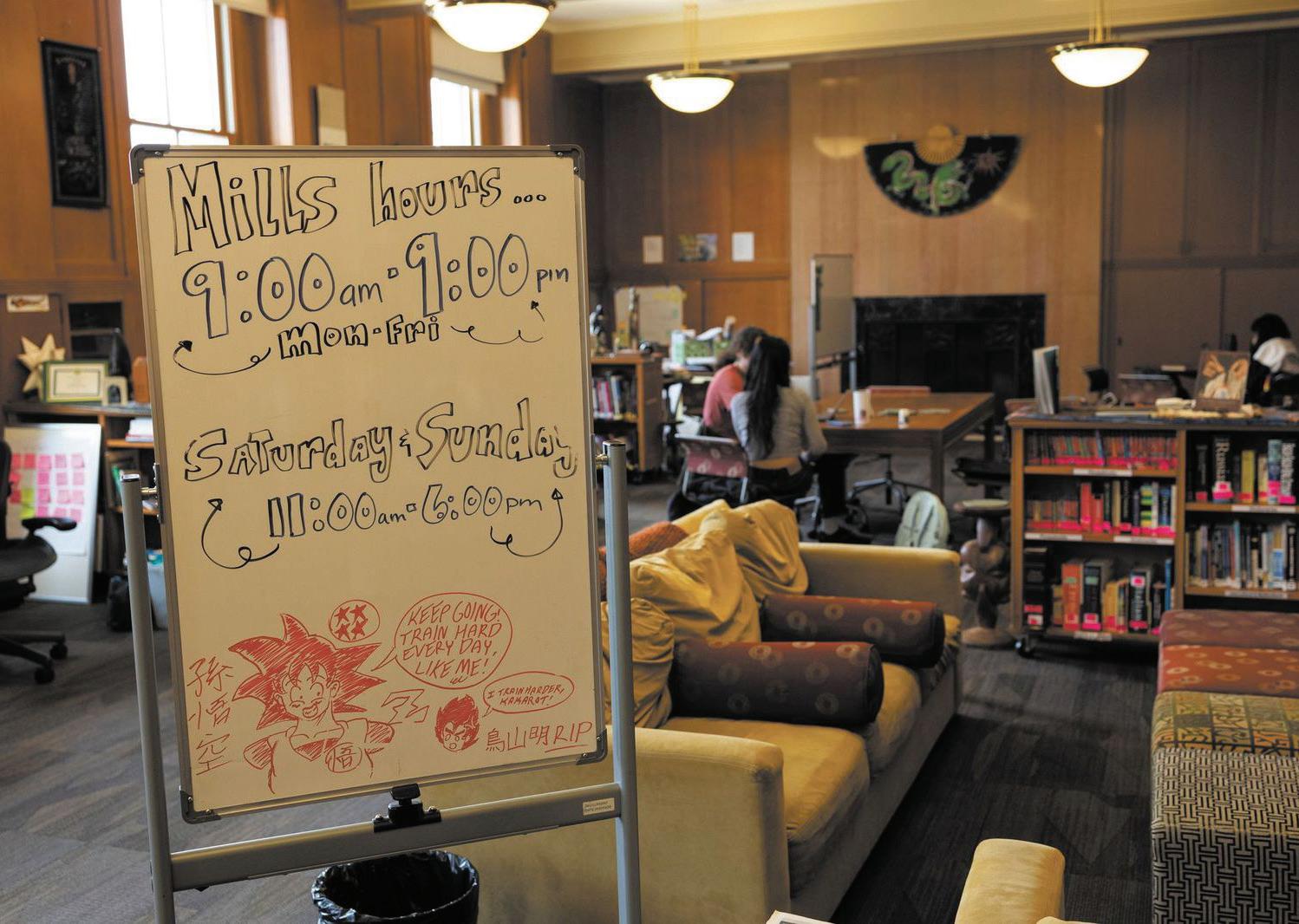
legislations are impacting other states? Yes.”
As of May 1, at least seven states have signed legislation banning or defunding DEI initiatives including unprecedented steps taken by Florida Governor Ron Desantis removed all DEI job positions from the University of Florida and just two weeks later Alabama Governor Kay Ivey signed into law a bill effectively banning DEI by removing funding from “divisise concepts” among other rules. Similar legislation is being actively pursued in numerous states including Texas, North Carolina and Georgia with legislation going into effect later this year in states including Idaho, Utah and North Dakota.
Alex-Assensoh said that while the university has not come under direct attack from anti-DEI legislation, it has still been forced to adapt to “broader issues.”
After the affirmative action ruling in June 2023 banning affirmative action, Alex-Assensoh said she worked with others in the OVPEI, UO General Counsel and the Office of Admissions to help adjust the UO admissions process to ensure the university was fully complying with the ruling.
In an email statement, Erin Hays, UO associate vice president of student services and enrollment management and director of admissions, said that prior to the Supreme Court ruling, UO was already in compliance with the ruling because they use a “race-neutral” admissions policy, citing the University’s “holistic review” process.
This means that students are not compared to one another but rather independently reviewed for admission.
“Although we knew our process was already in compliance, our holistic review process was in need of some updates over the summer,” Hays said in a statement to the Emerald.
This suggests that the work with the general counsel was to ensure that updates made to the holistic review process were in compliance with the new federal law, meaning that UO was never reliant on the affirmative action process to begin with.
Hays clarified that the Supreme Court decision on affirmative action was not the initiator of these updates but that legal counsel was sought to make sure any changes complied with the new law.
One broader DEI issue facing the OVPEI, according to Alex-Assensoh, includes addressing the rising tensions on college campuses nationwide amidst the Israel-Hamas war.
Alex-Assensoh said that the OVPEI does not handle or rule on complaints of antisemitism or Islamophobia, but rather serves as a resource for redirecting victims of harassment to the proper resources.
When approaching the Israel-Hamas war, AlexAssensoh emphasized the role of the institution to “help people feel the humanity of others.” This framework, developed and copyrighted by AlexAssensoh, is aimed at facilitating a love-based approach towards conflicts.
“There’s just a whole bunch of research that suggests that we can have people as far away apart as ideologically,” she said, “but if we approach them with a spirit of humanity and love that we can actually reach common ground.”
During winter term, the OVPEI team piloted two different training sessions for DEI office employees, aimed at dismantling antisemitism and Islamophobia. One was spearheaded by retired UO DEI employee Tova Stabin, aimed at dismantling antisemitism. The other was hosted by Lobna Ismail. According to Alex-Assensoh, her office aims to have the training available to deans, new faculty and other administrators by the end of the summer.
The training will also be made available to student organizations and any student who wants access at a later date.
Amidst the national controversy of the future of DEI programs such as the Center for Multicultural Academic Excellence, CMAE Director Rosa Chavez also said she feels grateful to live in a state where DEI initiatives are not being actively attacked.
“I think luckily, because we are in Oregon, I don’t feel like that impact,” Chavez said. “I feel very, very grateful that we live in our state and I work at UO where I feel like people understand the importance of the work we do.”
President of the UO Black Male Alliance Desi Acuay also said he feels appreciative of how UO values its DEI programs.
“It’s definitely cool for us people of color to have a spot at the table,” Acuay said. “At the table where power and decisions are made. [It] says the minority can’t just be overlooked.”
Acuay said that he is hopeful for the future of DEI, saying that DEI is institutionalized at UO, which in Acuay’s opinion will make it “hard to remove.”
“America has always had this shift of pendulum,” Alex-Assensoh said. “We want to be equitable, and then we don’t want to be equitable and [right] now we’re swinging toward that we [as a country] don’t want to be equitable.”
Members of the UO South Asian Cultural Alliance Ronit Gupta and Khushi Singh both said they have a desire for more culture-related classes, including “South Asian culture and tradition and geographical information.”

Gupta and Singh said that UO could improve DEI by offering these classes.
Both Gupta and Singh said they overall felt very supported from a DEI standpoint at UO, and confident in UO’s ability to protect their DEI programs amidst national pushback.
“It’s definitely unnerving to hear about other states doing that [removing DEI programs],” Singh said. “But I don’t think that that would happen in Oregon just because of how strong the state’s values are, and here specifically at the university.”
Despite the current national push for removing DEI programs, Alex-Assensoh still has optimism
for the future ahead.
“I don’t think this is who we are as a country. I would say that this is a momentary blitz,” AlexAssensoh said. “The arc of time bends long, but it bends toward justice.”
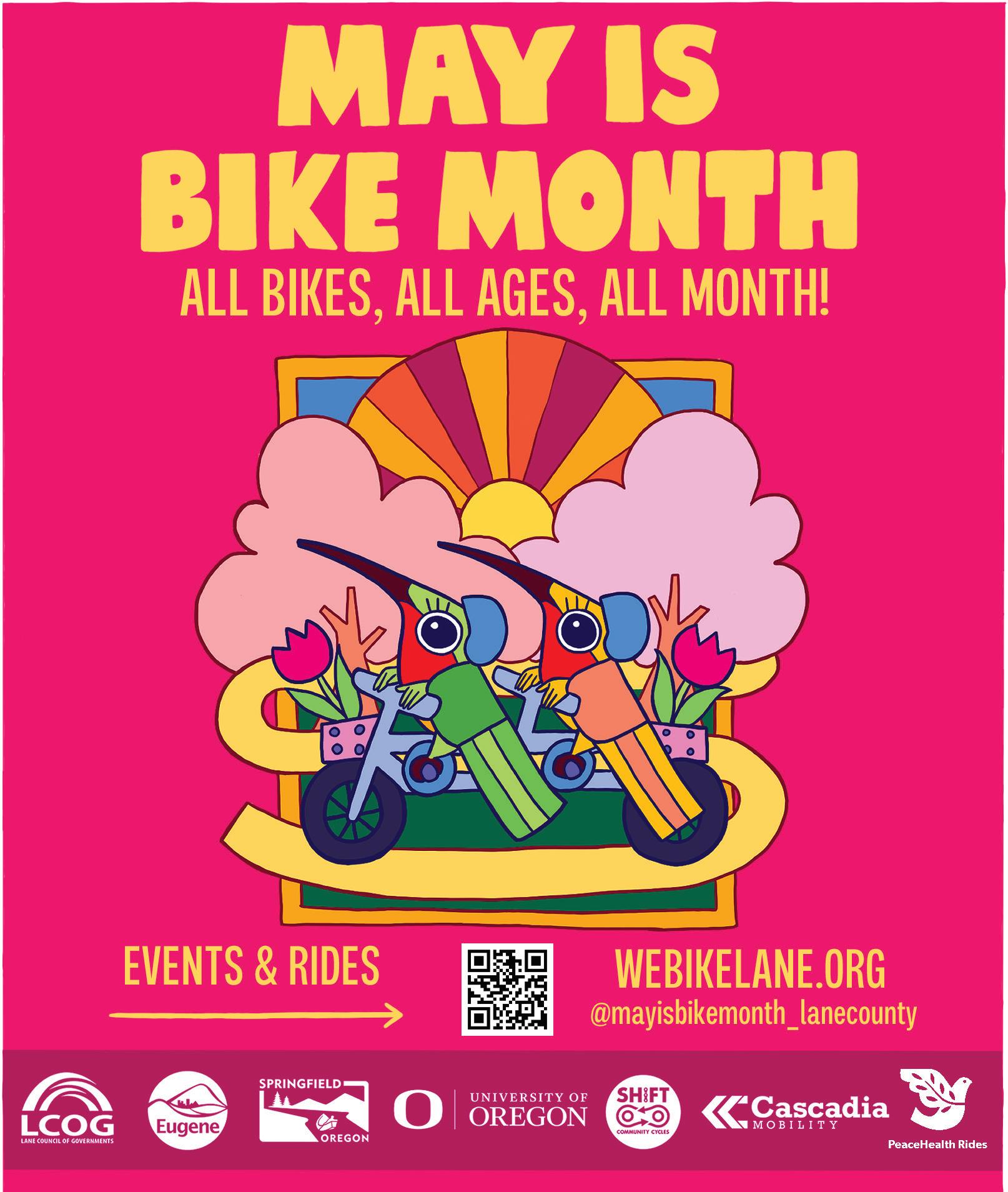


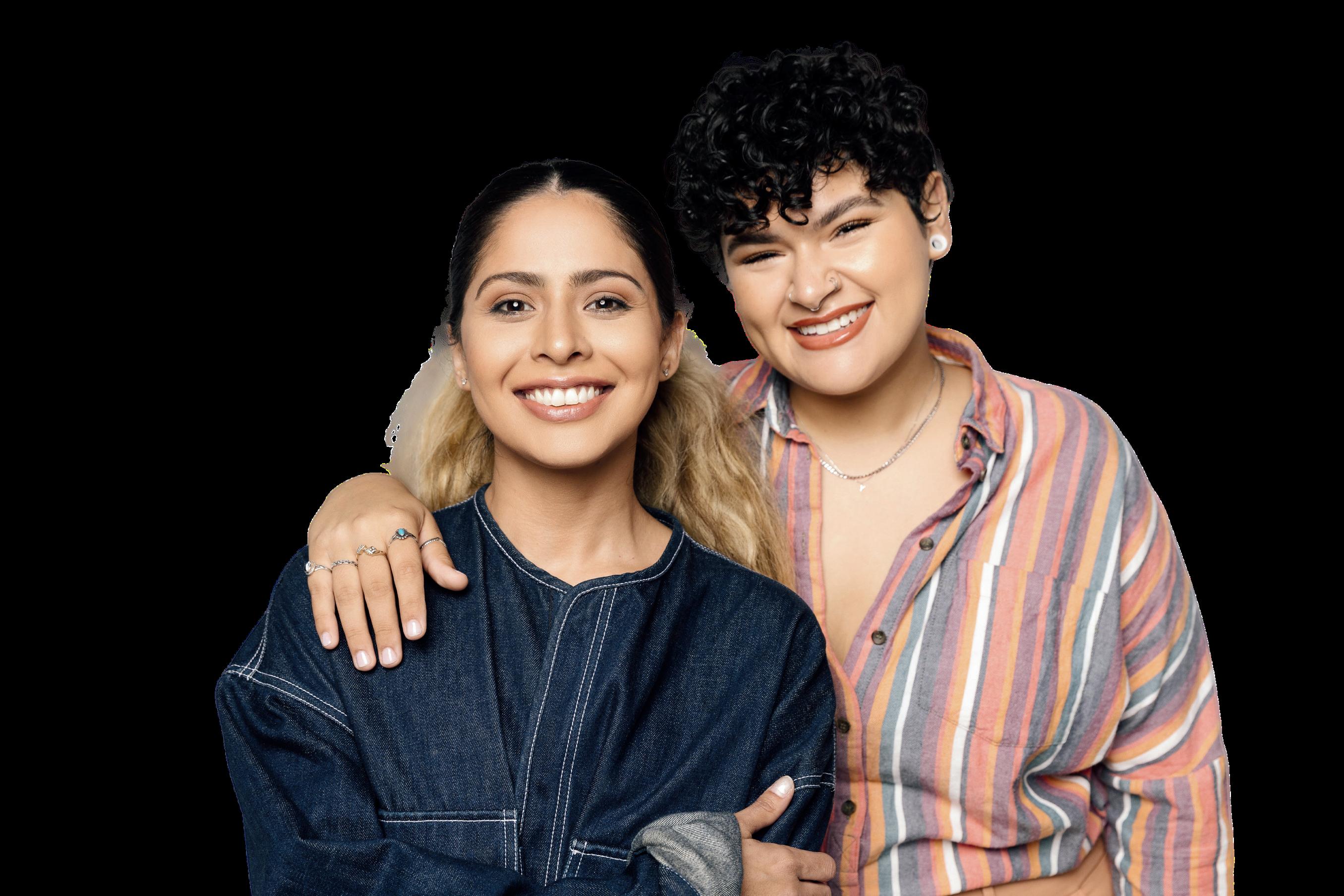


The Eugene Public Library is transforming into a dynamic community hub, offering diverse programs and resources to foster connection and inclusivity for all ages
Does anyone go to the library anymore? No, I don’t mean the hushed halls of the Knight Library on campus where students cram for their next midterm, but the welcoming embrace of the public library.
The Eugene Public Library offers an array of fun weekly activities, offering a space for people of all ages in the Eugene community located downtown.
When people think of the word “library,” they usually think of a quiet space with books and a shushing librarian. Library Director Angela Ocaña strives to change that narrative and put emphasis on the community-focused aspects of the library beyond just books.
The EPL provides an inclusive environment for all ages, with designated centers tailored to children, teens and adults. Children can participate in storytime sessions filled with books and singing, while teens have access to a space for gaming and creative endeavors with polymer clay. Additionally, adults can unwind and explore their interests through gentle yoga sessions or viewing parties of retro shows like “Freaks and Geeks.”
Ocaña’s perception of libraries shifted when she was growing up. Initially uninterested in librarianship due to a misconception that it was dull, she encountered librarians who transformed her understanding of the library’s potential and the endless possibilities it offers.
“I met a bunch of strong [and] powerful women who helped influence my career,” Ocaña said.
“Libraries aren’t just for adults. You can do cool adult programming, programming for teens and programming for kids.”
As a child, Ocaña frequently used the library because it was free and accessible. This instilled a desire in her to give back to the community through the library’s programs. Together with her staff, she aims to create a community space through relationship-driven interactions with anyone who walks through its doors.
She finds fulfillment in forming authentic relationships, particularly with young individuals dealing with political and environmental issues, aiming to offer support and guidance, especially with those who are unhoused. Resources like sanitation products are also made available for them. With these connections, Ocaña aims to provide validation and support to aid their growth and well-being.
“I know that the library makes a difference in people’s lives,” Ocaña said. “Those who engage with it, from printing a job application to just having a safe place to sit, this place makes a really big difference in lots of different ways, whether [people] tell us or not.”
The library fosters inclusivity in various ways, including a visible progressive flag, pronoun pins and diverse book displays featuring works by BIPOC and queer creators. Even programs like Talk Time provide a welcoming space for individuals with diverse English proficiency levels
and reading skills to engage in conversation. Ocaña said that reading in a dominant language like English can sometimes be taken for granted, so this gives a resource to navigate a predominantly white, English-speaking and middle-class world.
Again, the library is more than just books. It features a “Library of Things,” offering items like board games, audio equipment and unconventional objects like baking pans, metal detectors, robotic therapy cats and more. Students at UO looking for something fun to do also have access to these resources.
Ocaña believes that publicly funded resources like the library are important and people should take advantage of them because a lot of the programs and items offered are free with (and some without) a library card. She believes that people naturally seek connections and a sense of belonging, and the library is the perfect place with its community-building programs.
“I think people forget about that when they think about the benefits of what a library can bring,” Ocaña said. “We’re such a community resource that’s here for the public, whether they have a library card or not. If they’re craving knowledge, if they want a book, if they want a place to sit, whatever brings them in, there’s something for everybody at the public library.”

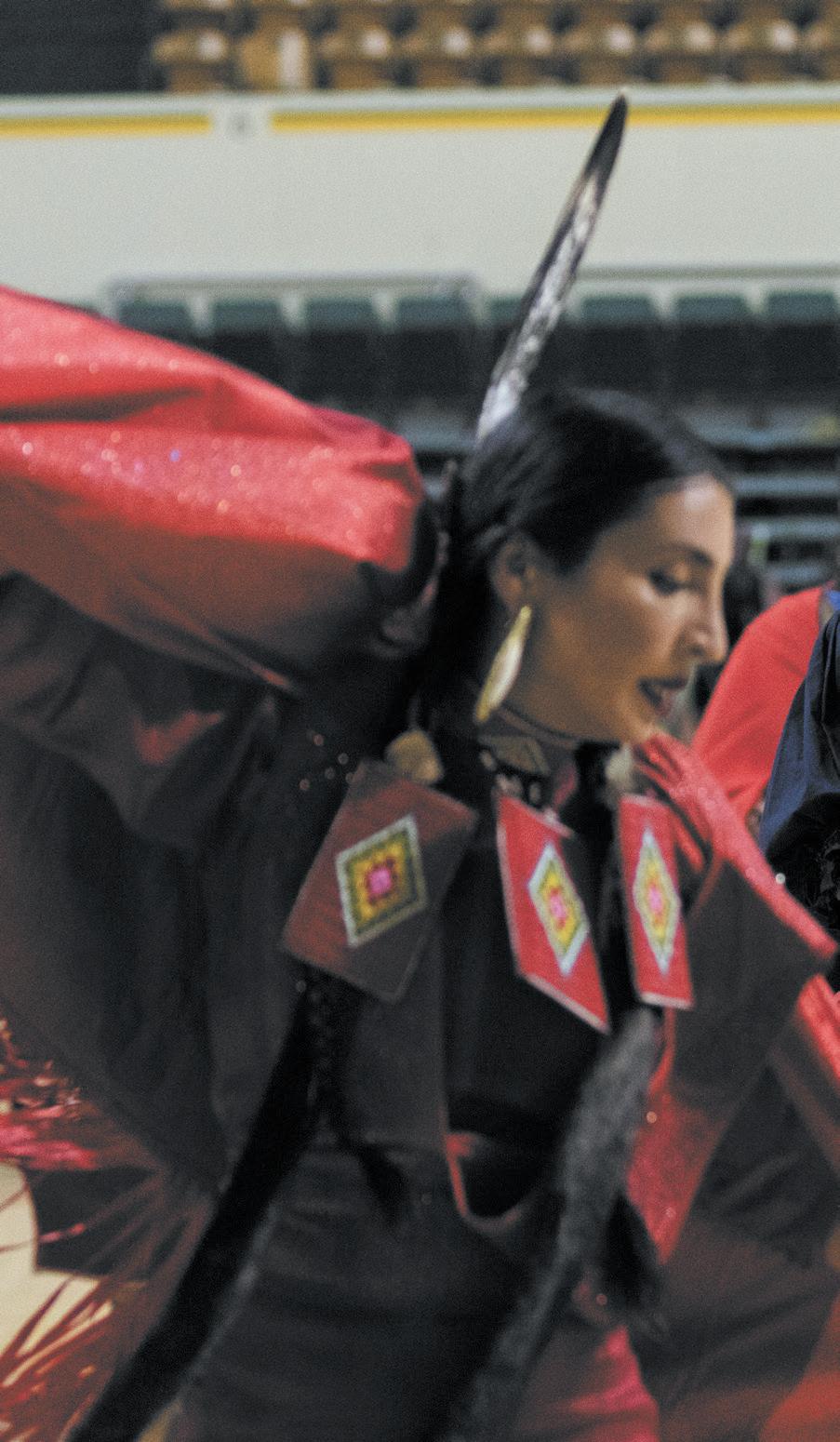
Dancers perform during the “Boys Teen/Junior Traditional” dance on the first day of the 56th annual Mother’s Day Powwow on May 10, 2024.

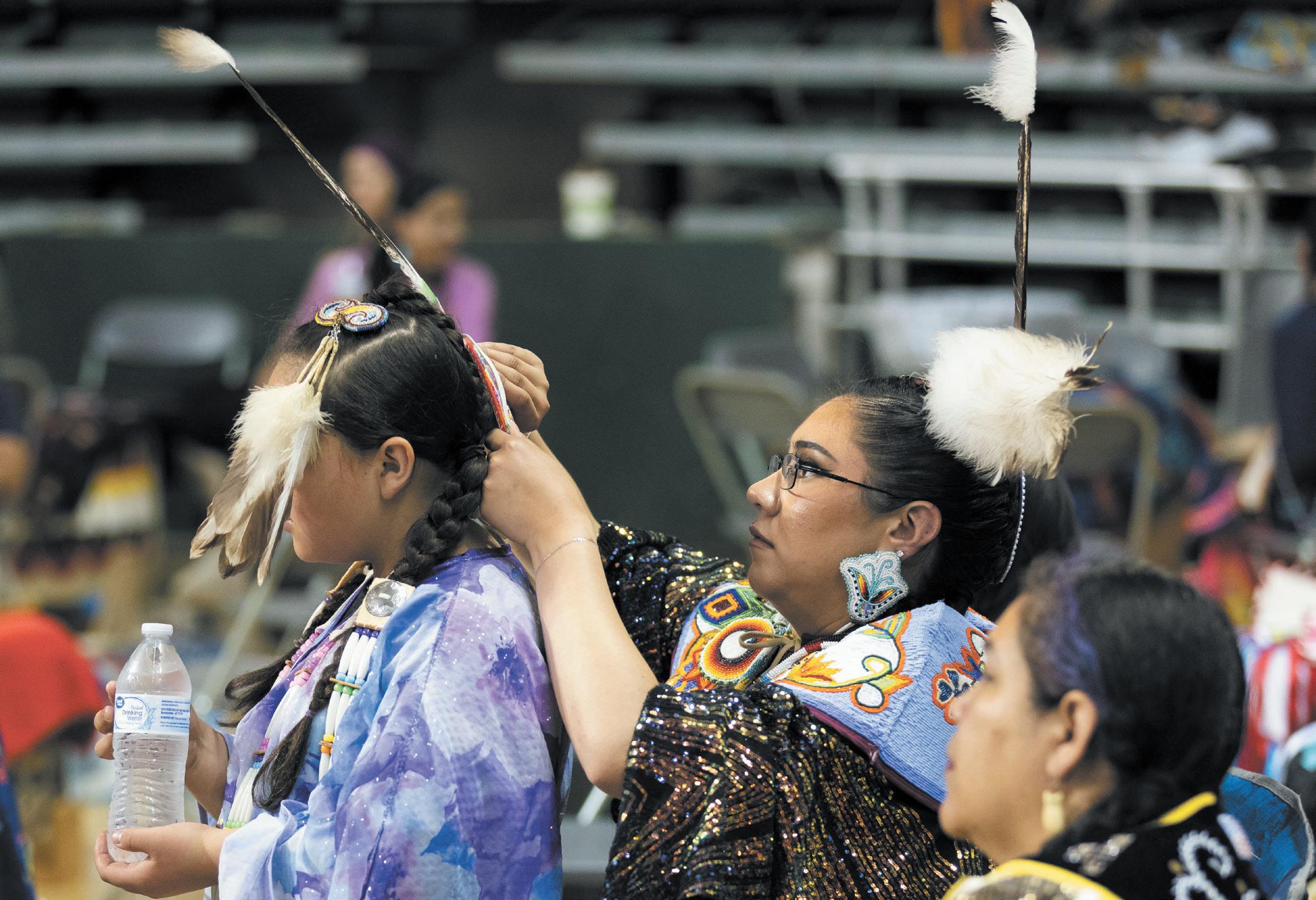
A woman helps a child with her regalia on the first day of the 56th annual
Day Powwow on May 10, 2024.
People dance during an intertribal dance on May 11, 2024. The 56th annual Mother’s Day Powwow saw its second and final day, with the crowning of new UO Indigenous Cultural Ambassadors, dance contests and a Missing and Murdered Indigenous Women special dance, organized by the Indigenous Women and Marginalized Genders Wellness Group.

People on the floor participate in a “Snake Dance” on the first day of the 56th annual Mother’s Day Powwow on May 10, 2024.
Preminger
31 Casual top with a collar 32 Relocation in an emergency, for short
“Thanks a __!”
Rental option on moving day
Was introduced to
Ripped
Multicountry org. based in
With 4-Across, storage unit made of fragrant wood
Celebration at the end of Ramadan, informally
“La Cage __ Folles”
Small sour fruit
First word for some babies
“What __ is new?”
Bring up again, as a web page
Struggle with “s” sounds when speaking
The “D” of FDA
“The Lion, the Witch and the Wardrobe” realm
1950s POTUS
Cheer (for)
33 Song in a Pride event set list 35 Bubbly prefix 39 1980s maze runner with a red bow 42 French one
Superstar Dolly
“South Park” kid in a green hat
47 __ and gloom
49 Focus of some lessons in history class and math class
51 “I wish I could __ that!”: “My eyes!”
52 Flouts a “No Smoking” sign, perhaps
53 To no __: in vain 54 Geeky 55 Legend 56 Empty room sound
58 Boulder 61 Feel remorse over
62 Poem in tribute

Opinion: Here’s why media literacy makes all the difference
When I have a break for a few minutes throughout the day, I admit that my first instinct is to scroll through social media. I like to try to stay informed, so I follow quite a few news sources, ranging from industry giants like The New York Times and The Washington Post to local weeklies and, of course, the Daily Emerald.
Unfortunately, this means that a lot of the time, I’m only reading headlines instead of fully digging into the articles. And I’m not alone in this. An article from the Pew Research Center shows that as of 2021, over 85% of U.S. adults got their news from a digital device. In 2023, three in 10 U.S. adults regularly got news from Facebook, with other popular social media platforms drawing in significant news engagement, as well.
In the internet age, we tend to expect everything to be fast. If you could read a short post or watch a TikTok about current events in less than 60 seconds, why would you bother to engage with the whole article? Who has time for that anymore? In a perfect world, you would.
But we don’t live in a perfect world. Take a look at the array of comments under any of those social media news stories if you’re not already convinced. That’s a good way to lose your faith in humanity’s intelligence. People like to run wild with sound bites, sentence fragments and unfounded assumptions the second they get the chance. It’s up to you to get the full scoop and think critically. You might be asking yourself why it matters so much. As you’re undoubtedly well aware, we’re
BY SADIE TRESNIT • DESIGNED BY LIZ BLODGETTrapidly approaching election season (anyone else getting incessant political texts at all hours of the day?). More than ever, this is a time when biased news has tangible real-world implications. Even outside of electoral politics, sensationalism in news, particularly on social media, has incredible power to mislead the public. It’s vital to stay aware of it.
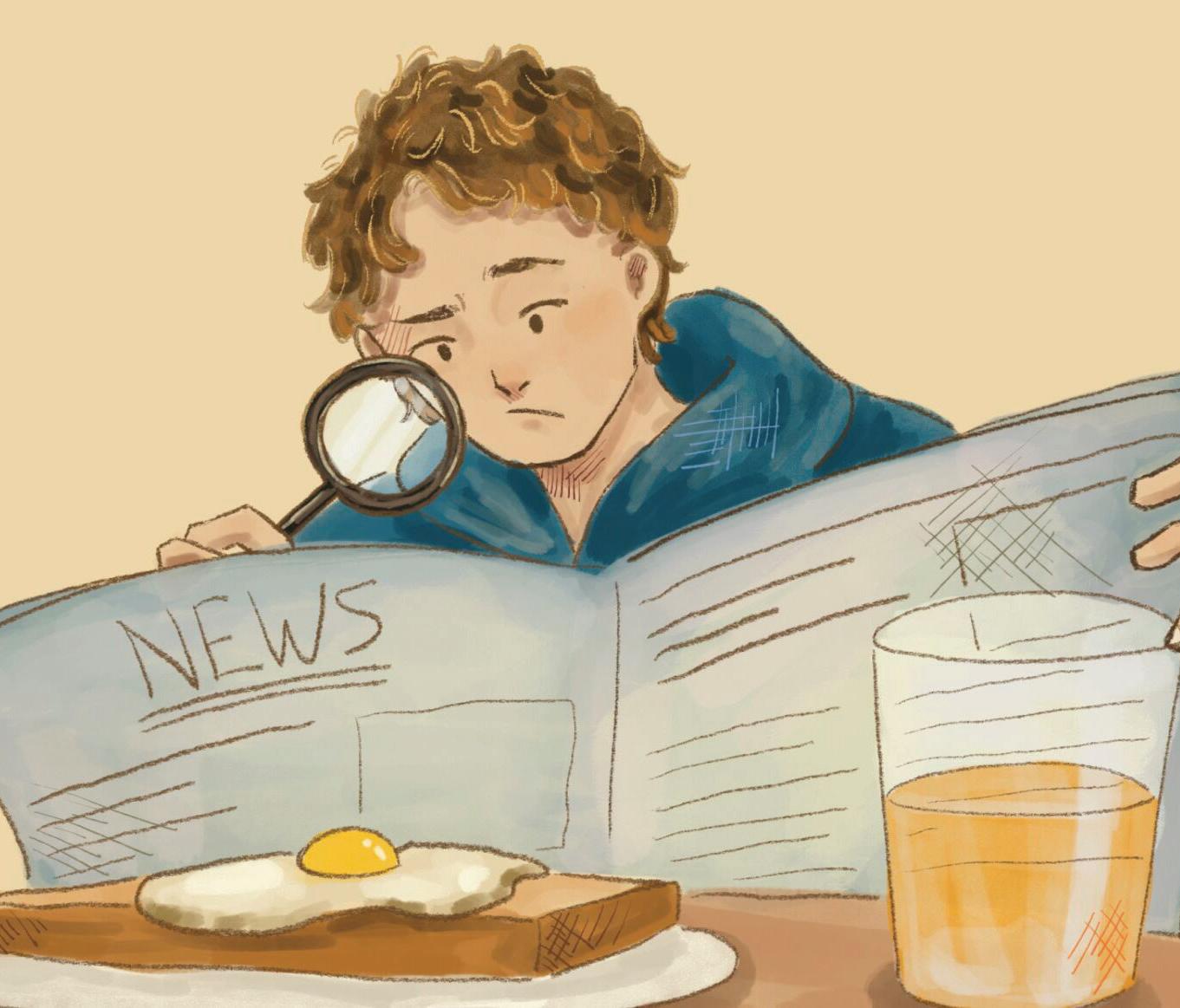
Of course, there’s the common assumption that you’re already smart enough to recognize “fake news.” If you know that The Onion is satirical, pat yourself on the back. But it’s not an issue of intelligence, especially when misleading information can be so subtle.
Some headlines are very obviously misleading, but being media literate means looking for
potential shortcomings or bias issues even in articles and videos that initially look reputable. When was that photograph taken? How many people were interviewed in that survey, and how were they chosen? How is the author or creator involved in the events of the story? What do they want you to think about it? Conflicts in any of these categories don’t mean that you can’t get any useful information from the source, but you should move forward with caution.
Unfortunately, for the busiest and laziest of us alike, it’s not as simple as glancing at an article and immediately determining whether it’s trustworthy. It takes a little more than that. For instance, even the search terms and keywords you use when you’re looking for news can make a huge difference in the perspective you walk away with. Try to seek out truly objective news, not just what’s in your comfort zone. You should always be able to find the author or creator of any source you’re using, and an “about” tab on the publisher’s website is another good sign. The same goes for a date on the source so you can be sure the information is current. Overall, transparency is always a plus.
And for heaven’s sake, verify information before you share it on social media. Don’t be another misinformed conspiracy theorist on Facebook. We have enough of those.


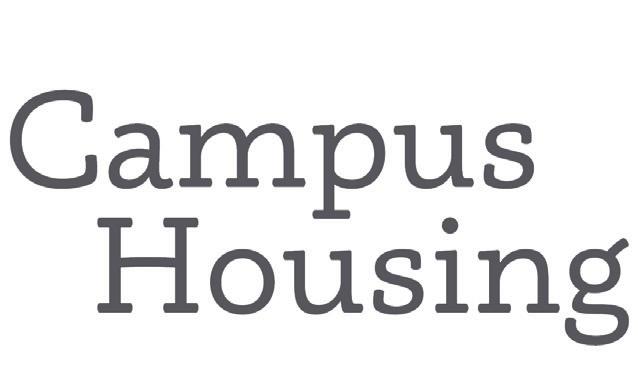
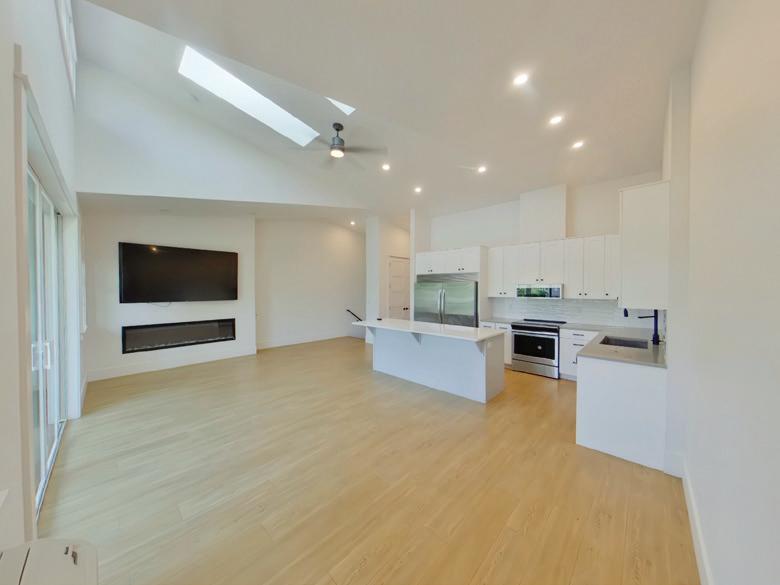





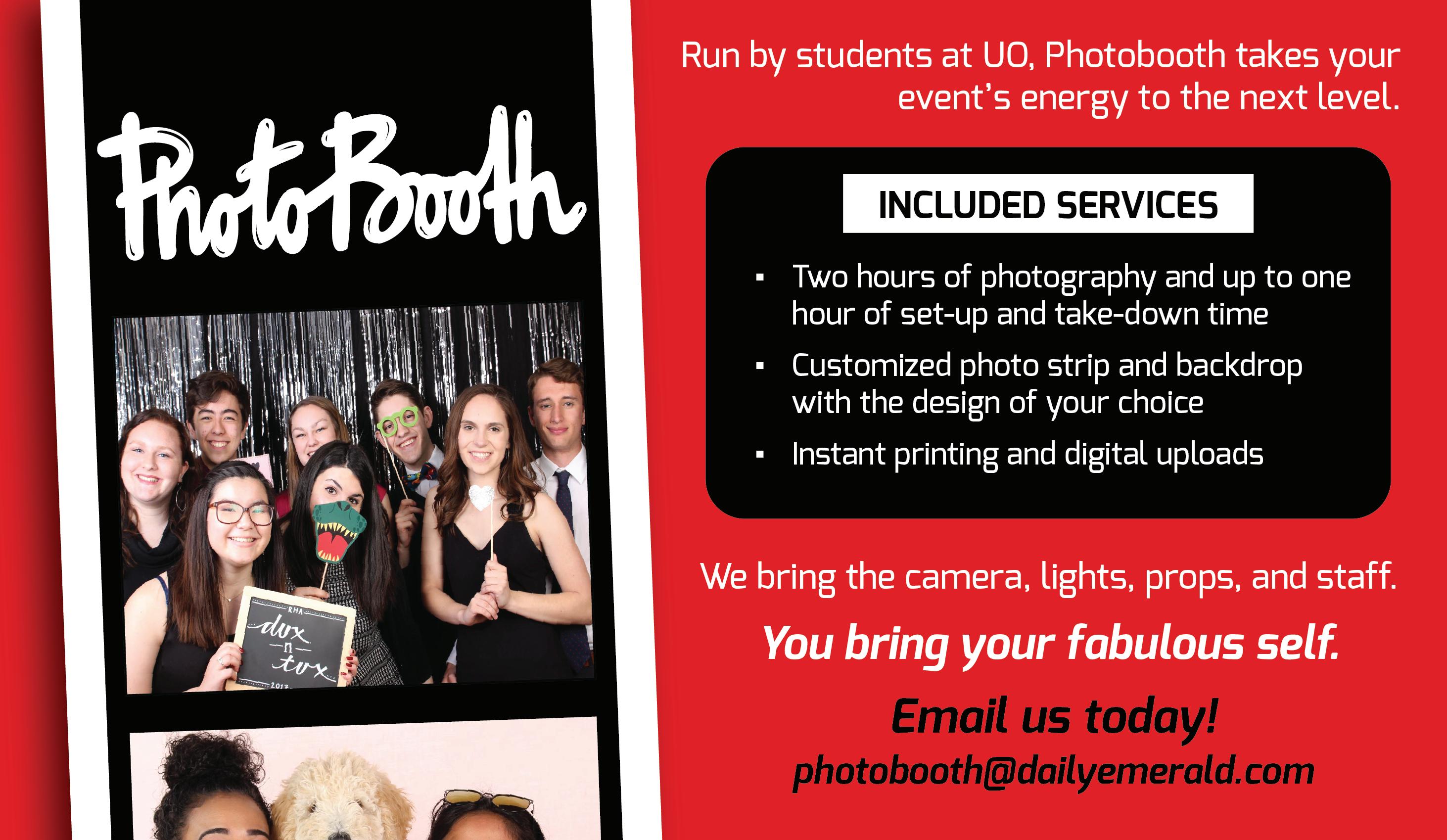




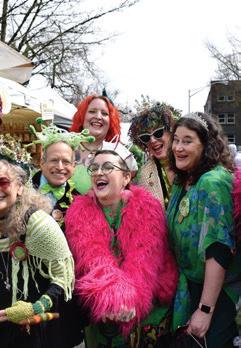










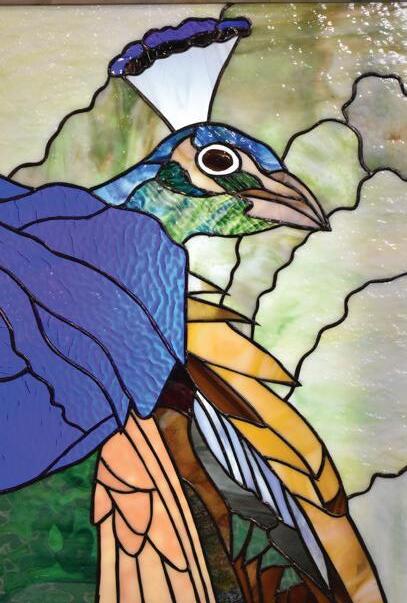

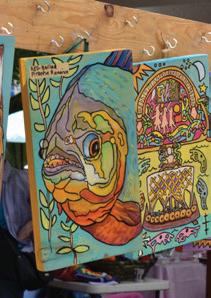



It was a blitz of information. It was a brand new sport. It was a breath of fresh air. It was a blessing in disguise.
A Pasadena, Calif.-born kid — who never has even held a lacrosse stick, and thought the balls were just used for stretching out — was tasked with covering, writing about and interviewing players on a team who play a sport I’d never watched. And I loved it.
Football season is too much of a big-time thing. Men’s basketball was exciting but albeit underwhelming until the last few weeks. The women’s side… yikes. So, I walked (or occasionally stumbled) up the stairs at Papé Field not knowing what to expect.
What I uncovered was a gift.
The team was fun, there were characters and personality galore. The team won! And boy were they fun to watch and cover.
They do the worm on the sidelines, they joke and laugh at practice.
“This is the medicine game,” Riley Taylor said
BY JOE KRASNOWSKI • DESIGNED BY GABRIELA MARTINEZwith a smile, implying that the game eases all issues. “I’m never not having fun on the lacrosse field.”
It’s been the “medicine game” for me, too (just ask the Papé stairs).
Predictably, at first, I had no idea what to expect. A brand new batch of players, few of which I had even heard of, much less watched before. It was tough to grasp.
Eventually, though, I caught a rhythm and quite simply wrote about what I could understand.
The palpable energy I saw at each and every game? That’s noticeable. A hot start better than any in years past? I could get behind that.
So I wrote, and I learned, and it was an experience I’ll never forget.
Listening in the press box to KWVA — the only other media outlet — was pretty darn beneficial, too. I learned about terms like “dodges” from my colleague Jack Lazarus. I did my best to see what rotations the players did. Heck, I even began to learn about the various positioning the goalies
were taught.
There were notable thrills, too, including a last second loss to UC Berkeley and a must-win senior day celebration over Arizona State. Turns out, watching a team you’ve learned to love and have seen grow actually play well is a really cool feeling.
Now it’s not always good. They’ve been whacked a couple of times against ranked teams. They’ve had wild scoring droughts as every team does.
They’ve had injuries.
But regardless, no matter when I wanted to write a solemn story — the prevailing sentiment from the team was always positivity.
My approach to each game changed, too. I would ask head coach Jessica Drummond about her approach to various practices. I’d ask players about their technique, so being one of two media outlets at each game had its benefits.
It had pressures, too. I was forced to speak up, to prod for an answer and to ask about injuries — something I’d seen as taboo earlier.
But as I grew, so did my appreciation for what this team demonstrated. They, quite literally, always had fun. They never took things too seriously. Of course they wanted to win, but winning wasn’t everything for this team. And I loved it.
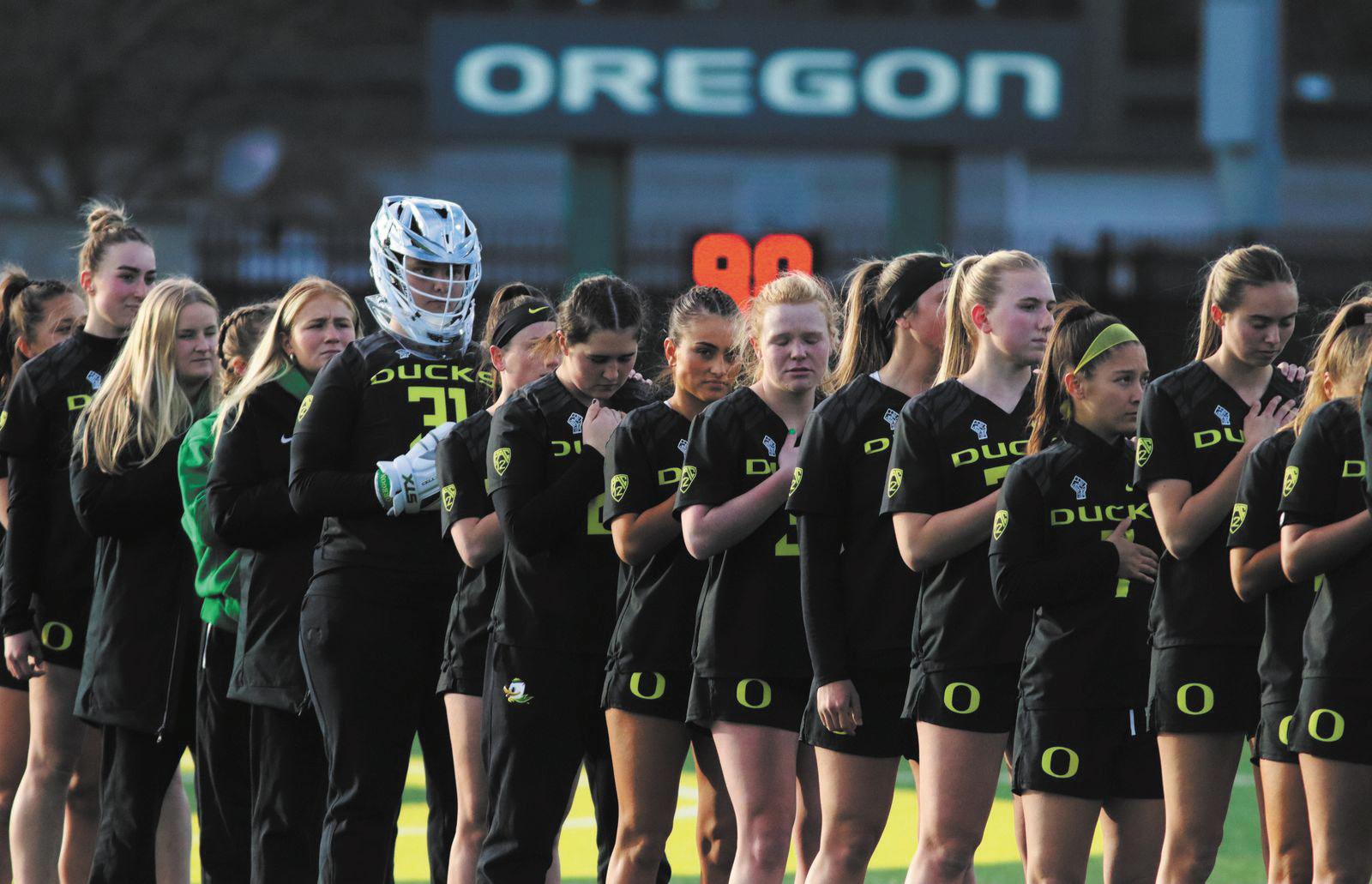
“Being surrounded by my teammates and coaches,” Taylor said, “we all get to do what we love and just have fun and we are so thankful.”
“I get to play and go to practice everyday with my best friends,” Anna Simmons, a lacrosse midfielder, said.
Best friends playing a kids’ game, how sweet is that.
In a sports world so laser-focused on results, this lacrosse team kindled a love I forgot existed. They play together, for each other and, as many of us once did, for the love of the game.
So, thank you for this first year, Oregon lacrosse. It’s been a pleasure.
